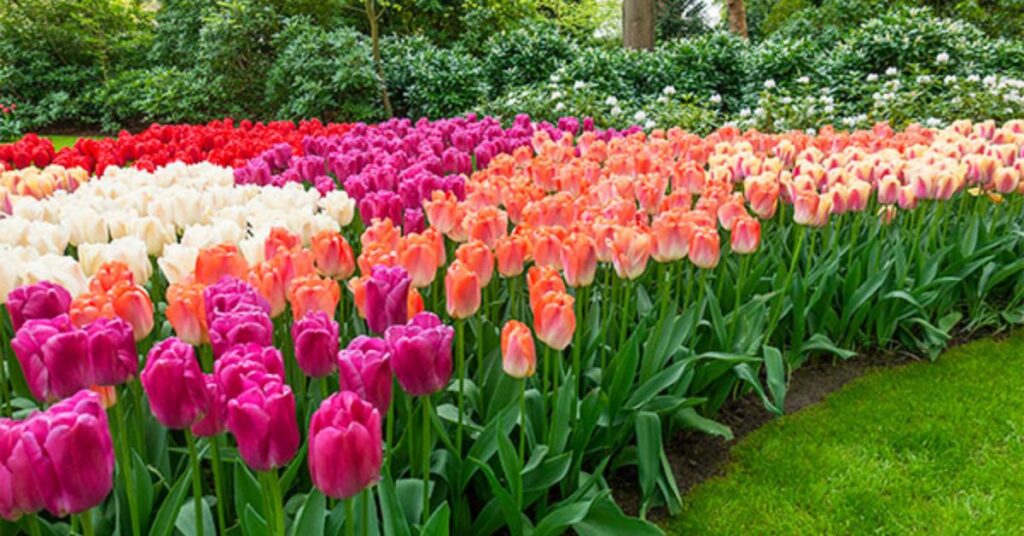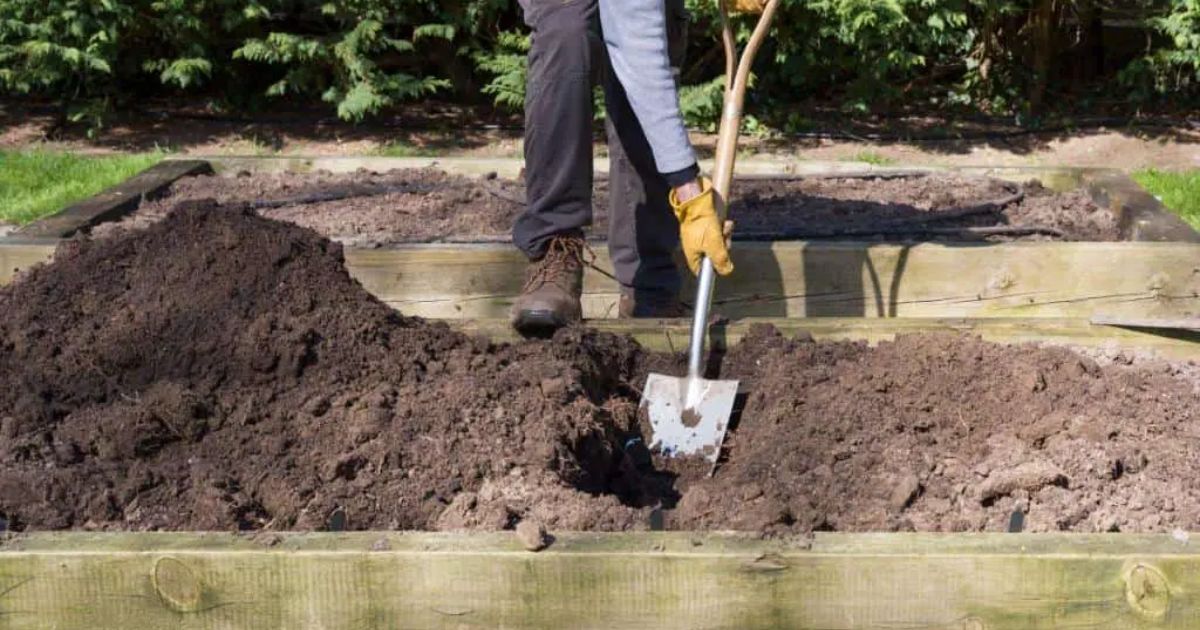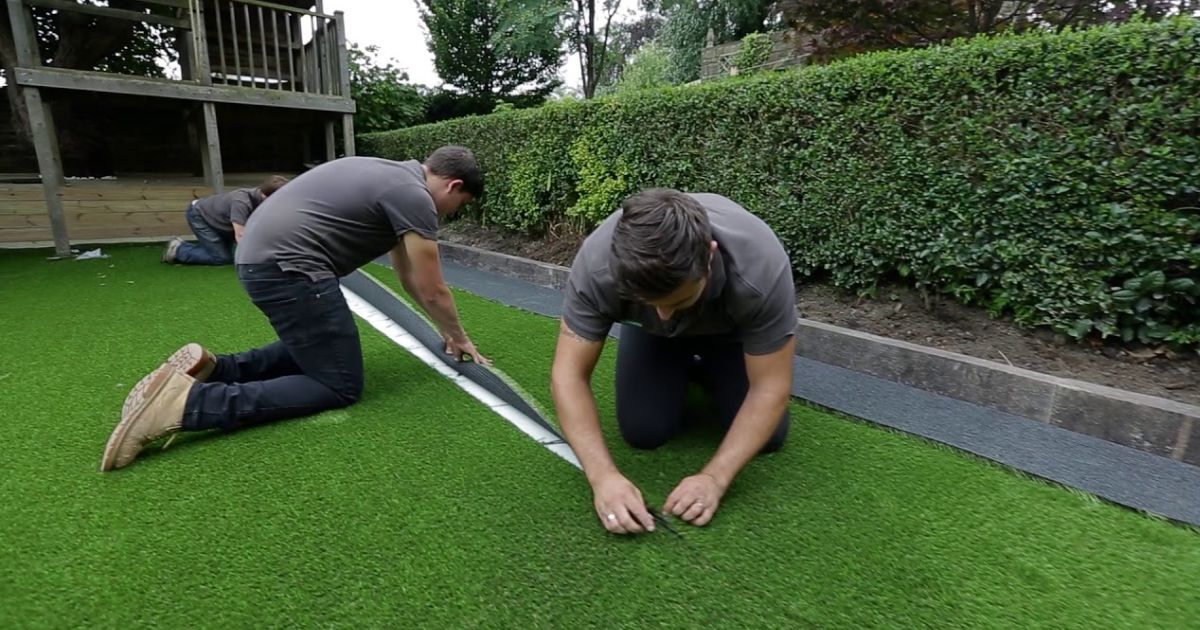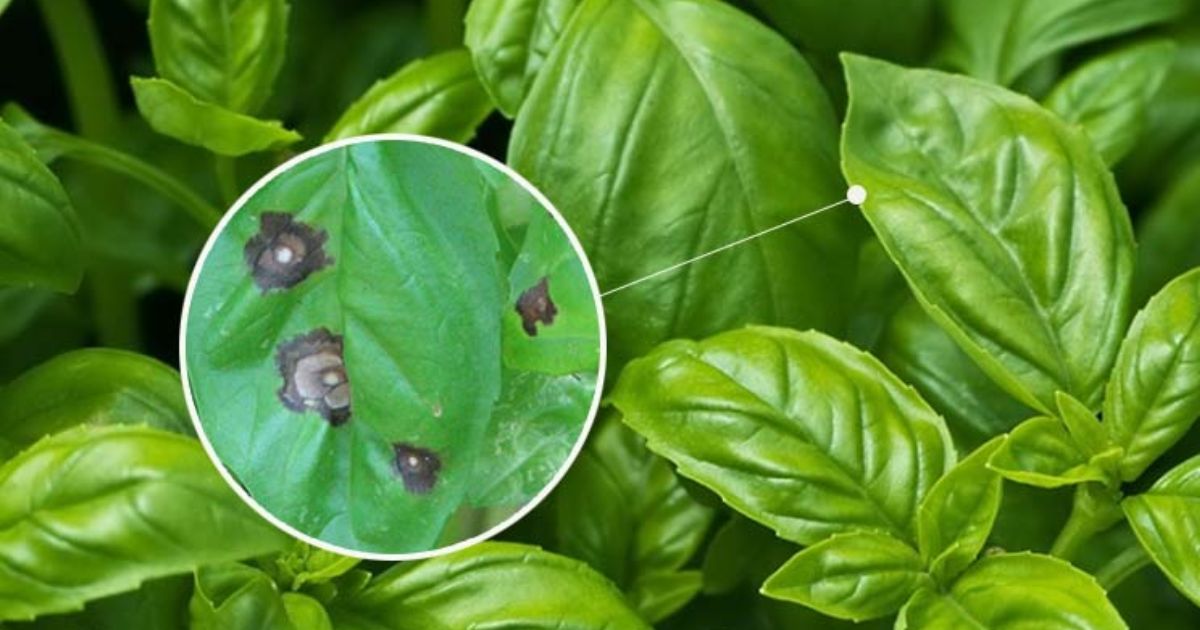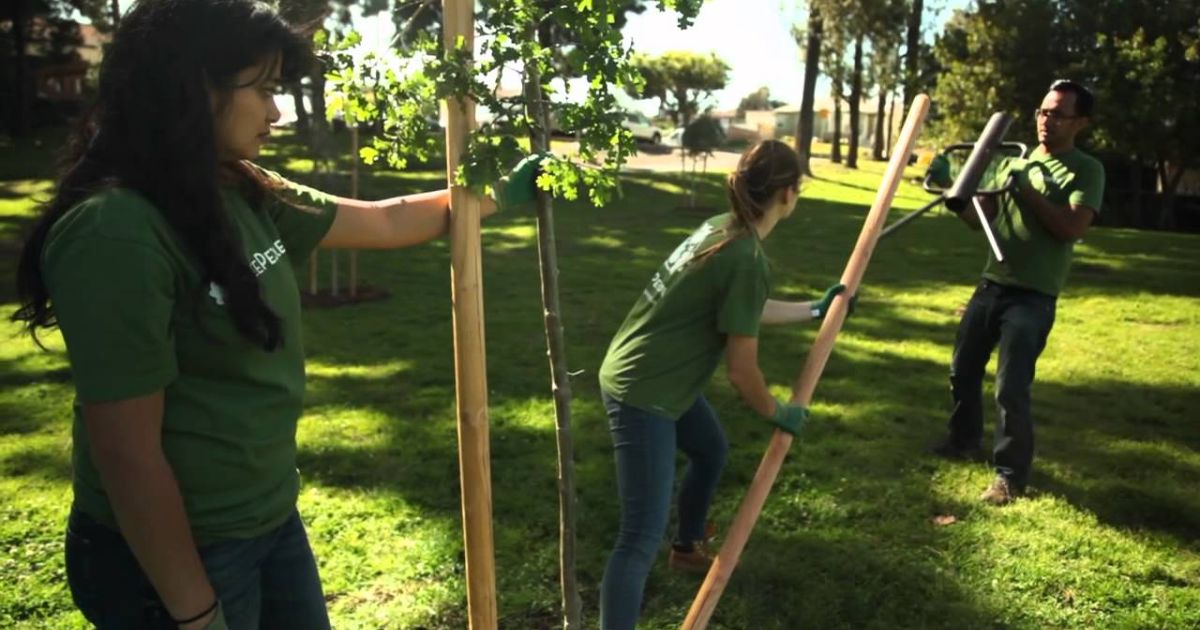Tulips are among the most beloved and iconic spring flowers. They bring vibrant colors and elegance to gardens, landscapes, and indoor arrangements. With their wide range of hues—from classic reds and yellows to stunning purples and pinks—A stunning display of tulips heralds the approach of spring.These hardy perennials, originally from Central Asia and later cultivated in the Netherlands, thrive in various climates and are relatively easy to grow with the proper care. Whether you’re planting them in flower beds, containers, or as part of a larger garden design, tulips can transform any outdoor space into a picturesque scene.
In this guide, we’ll take you through the entire process of growing tulips successfully, from choosing the right bulbs and planting them at the perfect time to ensuring they bloom beautifully year after year. Whether you’re a beginner or an experienced gardener, these tips will help you cultivate a stunning tulip garden that flourishes every spring!
How to Choose Tulips
Selecting the right tulips for your garden ensures a beautiful and long-lasting display. Choosing the perfect tulips can feel overwhelming, with over 3,000 varieties in different colors, The Best Containers shapes, and bloom times. Here’s how to pick the best tulips for your garden:
Consider Bloom’s time
Tulips bloom in three stages—early, mid, and late spring. For a continuous display of color, plant a mix of varieties with different bloom times:
- Early Bloomers (March – April) – Kaufmanniana, Fosteriana, and some Single Early tulips
- Mid-Season Bloomers (April – May) – Triumph and Darwin Hybrid tulips
- Late Bloomers (May – June) – Parrot, Fringed, and Lily-Flowered tulips
Choose the Right Tulip Type

Different tulip types vary in shape, height, and hardiness:
- Darwin Hybrid Tulips: Large, sturdy, and reliable perennials
- Triumph Tulips: Medium-height, great for borders and containers
- Parrot Tulips: Exotic, fringed petals with bold colors
- Lily-Flowered Tulips: Elegant, pointed petals with a graceful shape
- Species Tulips: Small but naturalizing, meaning they return every year
Select Tulips for Your Climate
- Cold Climates (Zones 3-7): Most tulips thrive in colder regions, as they require a winter chilling period.
- Warmer Climates (Zones 8-10): Opt for pre-chilled tulip bulbs or plant heat-tolerant species tulips for better success.
Pick High-Quality Bulbs
- Choose large, firm bulbs without signs of mold or damage.
- Bigger bulbs generally produce larger, healthier blooms.
- Purchase from reputable growers to ensure quality and disease-free bulbs.
Consider Color Combinations
Tulips come in nearly every color imaginable, making them perfect for stunning garden designs:
- Classic Look: Red and yellow tulips for a traditional spring feel.
- Elegant Style: White, pink, and pastel shades for a soft, romantic garden.
- Bold & Vibrant: Purple, orange, and black tulips for dramatic contrast.
When and Where to Plant Tulips
It is ideal to plant red tulips and black tulips in a vase together s in the fall before the ground freezes, as this allows them to establish roots before winter. Choosing the right location and timing ensures healthy growth and vibrant spring blooms.
When to Plant Tulips
- Ideal Planting time: Fall, typically between September and November (when soil temperatures drop to around 50°F / 10°C).
- In cold Climates (Zones 3-7), bulbs should For optimal root development, plants shouldbe sown 6–8 weeks prior to the first hard frost in order to ensure adequate root growth.
- Higher Temperatures (Zones 8–10): Before planting, chill bulbs in a refrigerator for 6–8 weeks since tulips require a cool time.
Location of Tulip Planting
- For optimal blooming, How to Grow Garlic pick a spot that receives at least six hours of direct sunlight each day.
Conditions for the Soil:
- To avoid bulb rot, use sandy, loamy, or well-draining soil.
- The pH should be between 6.0 and 7.0, slightly acidic to neutral.
- For improved development, enrich the soil with organic matter or compost.
- Planting tulip bulbs with the pointed end facing up should be done 6-8 inches deep and 4-6 inches apart.
- Protection from Pests: Squirrels and rodents love tulip bulbs, so plant them near daffodils or alliums, which naturally deter animals.
What Type of Soil is Best for Tulips?
should tulips be deadheaded thrive in well-draining, nutrient-rich soil that allows bulbs to develop strong roots while preventing rot. Here’s what to consider when preparing the perfect soil for tulip1990:
Well-Draining Soil is Key
- Tulip bulbs hate soggy soil and will rot if they sit in water too long.
- The ideal soil types for tulips are light, well-aerated soil or sandy loam.
- Sand, perlite, or compost can help enhance drainage in thick clay soil.
Optimal pH of Soil for Tulips
- Tulips require soil that is slightly acidic (pH 6.0 to 7.0) as opposed to neutral.
- Use lime to balance your soil if it’s excessively acidic.
- Reduce the pH of your soil by adding How to Grow a Peace Lily sulfur or peat moss if it is excessively alkaline.
Increasing the Nutrient Content of the Soil
- To increase soil nutrients, incorporate old manure or compost before planting.
- Tulips benefit from low-nitrogen fertilizers (bone meal or a bulb fertilizer) to promote strong roots and blooms.
- Avoid fresh manure, which can burn the bulbs and encourage fungal diseases.
Raised Beds or Containers for Poor Soil
- If your garden soil is too compacted or doesn’t drain well, grow tulips in raised beds or pots with planting mix that drains well.
What to Do with Tulips After They Bloom
Once colourful tulips finish blooming in the spring, proper post-bloom care ensures healthy bulbs for the next growing season. Here’s what you should do:
Deadheading the Flowers
- Once the tulip tulip tulip petals start wilting, cut off the spent flowers to prevent seed production.
- As a result, the plant can concentrate its efforts on storing nutrients in the bulb instead of producing seeds.
- To cut off the flower head while preserving the foliage, The No-Brainer Guide use pruning shears or clean, sharp scissors.
Leave the Leaves!
- Do not cut the leaves immediately after blooming.
- Let the foliage turn yellow and die back naturally (this can take 6-8 weeks).
- During this time, the leaves photosynthesize and send energy back to the bulb, ensuring strong growth next season.
- To hide the fading red tulips and black tulips together leaves, you can plant low-growing perennials like hostas or ground cover plants nearby.
Fertilizing for Next Year
- After blooming, feed the tulips with a balanced fertilizer (like 10-10-10) to strengthen the bulbs.
- Water the soil lightly to help the nutrients absorb.
Digging Up or Leaving Bulbs in the Ground
- Perennial Tulips (Naturalizing Varieties)
- Some tulips, like Darwin Hybrid and Species tulips in containers, Why Fall is the Best Time to Plant Trees can stay in the Ground year-round and will return each spring.
- If you leave them in the Ground, ensure the soil is well-draining to prevent rot.
- Annual Tulips (Most Hybrid Varieties)
- Many modern tulip hybrids won’t rebloom reliably after the first year.
- In warm climates or if the bulbs are crowded, it’s best to dig them up after the foliage has died back.
- Store bulbs in a cool, dry place until fall planting.
Mature Size of a Tulip
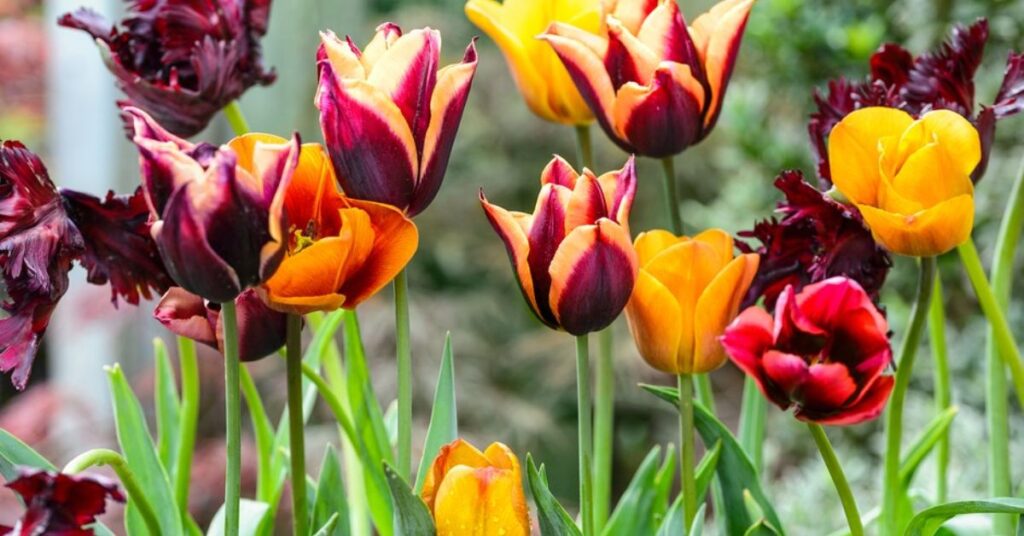
The mature size of a tulip depends on its variety, but most tulips grow to the following general sizes:
Height
- Short Tulips (6-12 inches / 15-30 cm)
- Examples: Greigii Tulips, Kaufmanniana Tulips, Species Tulips
- Medium-height tulips (12-18 inches / 30-45 cm)
- Examples: Triumph Tulips, Fosteriana Tulips
- Tall Tulips (18-30 inches / 45-75 cm)
- Examples: Darwin Hybrid Tulips, Single Late Tulips, Lily-Flowered Tulips
Spread (Width)
- Each tulip plant typically spreads 3-6 inches (7-15 cm) wide.
- Tulip bulbs should be planted 4-6 inches apart for proper growth.
How to Plant Tulips in a Container
Planting tulips in containers is a great way to enjoy their beauty on patios, balconies, or small spaces. Here’s a step-by-step guide to ensure your potted tulips thrive.
Choose the Right Container
- Select a pot with drainage holes to prevent water from pooling.
- The container should be at least 12 inches (30 cm) deep to allow room for root growth.
- Use a wide pot to plant multiple tulip bulbs for a full display.
Use Well-Draining Soil
- Fill the container with light, well-draining potting mix (avoid heavy garden soil).
- Add perlite or sand to improve drainage.
- A slightly acidic to neutral pH (6.0-7.0) is ideal.
Planting the Tulip Bulbs
- Depth: Plant bulbs 6-8 inches (15-20 cm) deep, pointed end up.
- Spacing: Place bulbs close together (about 1 inch apart) but not touching for a lush bloom.
Watering & Care
- Water thoroughly after planting to help bulbs settle in.
- Keep the soil slightly moist but not soggy throughout winter.
- In warmer climates, store the pot in a superb location (like a garage) for 10-12 weeks to mimic winter chilling.
Encouraging Blooms in Spring
- Once shoots emerge, place the pot in full sun (at least 6 hours per day).
- Begin watering regularly, When and How to Harvest Garlic Scapes for the Best Flavor but avoid overwatering.
- Use a balanced fertilizer once the leaves start growing.
How to Replant Tulip Bulbs for Next Season
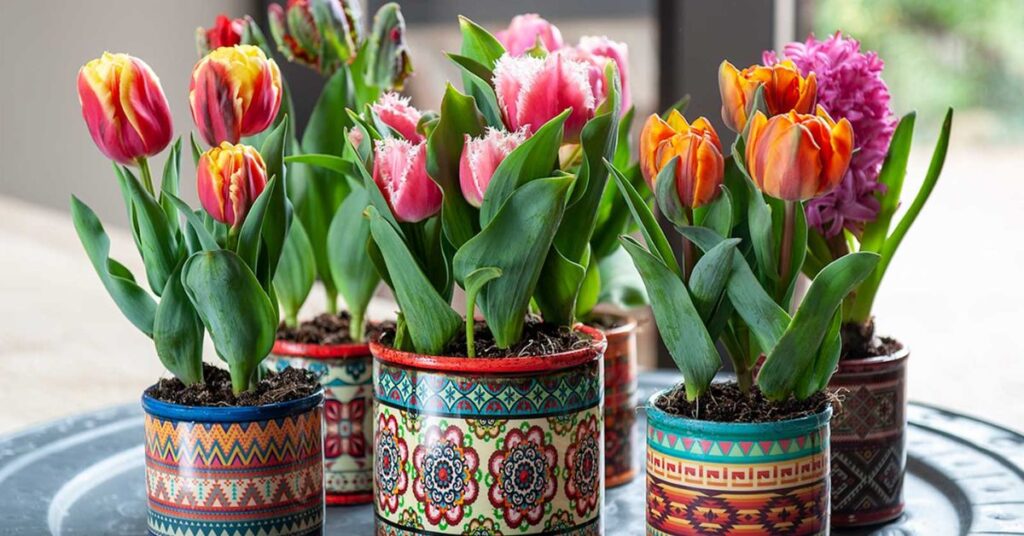
Replanting tulip bulbs ensures a beautiful bloom each spring. Whether digging them up for storage or moving them to a new location, follow these steps to successfully replant your tulip bulbs.
Digging Up and Storing Tulip Bulbs (If Needed)
If tulip pots were left in the Ground but didn’t bloom well or need relocation, dig them up after their foliage has died back (usually 6-8 weeks after flowering).
- Use a garden fork or trowel to carefully lift the bulbs from the soil.
- Shake off excess dirt and inspect bulbs for damage or rot—only keep firm, healthy bulbs.
- Let them air dry in a cool, dark place for a few days, then store them in a mesh bag or paper sack in a superb, dry location until fall.
Choosing the Right time and Location for Replanting
- The best time to replant is in the fall (September-Nov ember) before the Ground freezes.
- Ideal Location:
- Full sun (at least 6 hours of sunlight daily)
- Well-draining soil to prevent rot
- A spot protected from strong winds
Preparing the Soil
- Loosen the soil 12 inches deep to allow good root growth.
- Mix in compost or organic matter for nutrients.
- Ensure the soil is well-draining (add sand or perlite if needed).
Planting the Tulip Bulbs
- Depth: Plant bulbs 6-8 inches deep (3 times the bulb’s height).
- Spacing: Place bulbs 4-6 inches apart, pointed end up.
- Cover with soil and gently press down to remove air pockets.
Watering and Mulching
- Water thoroughly after planting to help establish roots.
- Apply a thin layer of mulch (straw or shredded leaves) to insulate bulbs in colder regions.
Spring Care for Healthy Blooms
- Once shoots appear, remove mulch and start watering regularly.
- Fertilize with a low-nitrogen fertilizer when leaves emerge.
- Enjoy beautiful blooms in spring.
Growing Tulips: Problem-Solving
While tulips are relatively easy to grow, gardeners sometimes face challenges that can affect their blooms. Here are common problems and solutions to ensure your tulips thrive:
Poor Blooming
If tulips fail to bloom, it could be due to insufficient sunlight, improper planting depth, or overcrowding. Ensure your tulips receive at least 6 hours of direct sunlight and plant bulbs at a depth of 6-8 inches. If bulbs are too close together, dig them up and replant them with adequate spacing (4-6 inches apart).
Yellowing Leaves
Yellowing leaves might indicate overwatering or a nutrient deficiency. Ensure the soil drains well and avoid soggy conditions, which can lead to root rot. How to Grow Garlic To encourage healthy growth, add compost or a balanced fertilizer if the soil lacks certain nutrients.
Which Country is Famous for Tulips?
The Netherlands is by far the most famous country associated with tulips. The Dutch have a long history with tulips and have a strong cultural connection to the nation, , economy, and landscape.
History of Tulips in the NetherlandsTulips were introduced to the Netherlands in the 16th century after being brought over from the Ottoman Empire (modern-day Turkey). By the 17th century, tulips had become a symbol of wealth and status, especially during the “Tulip Mania” period when flowers were highly sought after and traded like commodities.
Tulip Fields and Festivals
The Netherlands is well-known for its breathtaking tulip fields, especially in areas like Lisse and Keukenhof. Visitors swarm to witness the vast, vibrant fields of tulips in bloom each spring. A common nickname for Keukenhof is the “Garden of Europe,” hosts millions of tulips in various varieties.
Additionally, the country celebrates the tulip with the Tulip Festival in Amsterdam and other parts of the country, where tulips are celebrated in art, gardens, and public spaces.
Economic Importance
Tulips are not just an aesthetic treasure for the Dutch but also a significant part of the country’s agricultural exports. The Netherlands is the world’s largest producer and exporter of tulip bulbs, sending millions around the globe each year.
In conclusion, the Netherlands is undoubtedly the country most famous for tulips. It has a deep-rooted history and a blooming landscape that draws people from all over the world.
Pests and Diseases
Tulips are prone to pests like squirrels, aphids, and snails. Protect bulbs by planting them in a wire mesh or surrounding them with companion plants like daffodils that deter pests. Fungal issues, such as botrytis (gray mold), can be managed by removing infected plant parts and ensuring good air circulation.
Conclusion
Growing tulips can be an enriching experience, offering stunning color and elegance to your garden year after year. You can enjoy a beautiful display each spring by choosing the right variety, planting them at the correct time, and providing proper care. Whether you’re growing them in the Ground or containers, tulips thrive with well-drained soil, adequate sunlight, and attention to common garden issues like pests and diseases.With some planning and problem-solving, Your tulips will thrive, enhancing the beauty and happiness of your outside areas.So, dig in, get your hands dirty, and watch your tulip garden bloom into a spectacular masterpiece!
FAQ
When is the best time to plant tulip bulbs?
Before the ground freezes, which is often between September and November, is the ideal time of year to plant tulip bulbs. Before winter arrives, this allows the bulbs to grow root.
How often should I water tulips?
Water tulips regularly during their growing season, but avoid overwatering. The soil should be moist, especially when the bulbs are planted. After blooming, reduce watering as the leaves die back.
Can tulips grow in containers?
Yes! Tulips grow well in containers. Choose a 12-inch deep pot with drainage holes, use well-draining soil, and ensure they receive full sunlight for the best blooms.
How do I protect tulip bulbs from pests?
Protect tulip bulbs with companion plants like daffodils, which deter pests. You can also use wire mesh around bulbs or apply organic pest deterrents.

